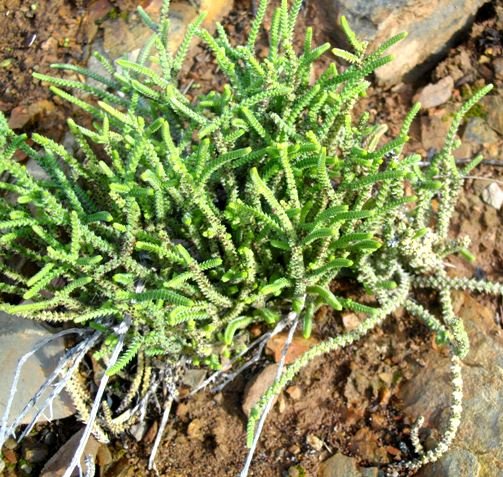Crassula muscosa

Author: Ivan Lätti
Photographer: Ivan Lätti
The common Afrikaans name of skilpadbos (tortoise bush) for Crassula muscosa may point to the guilt of a leaf browser. Tortoise survival is, however, much more problematic in South Africa than that of this widely adapted and prolific, albeit frail-looking little Crassula.
Another colloquial name, skoenveterbossie (little shoelace bush) is indicative of the appearance of the wiry stems of the plant. One more such name, boesmanveters (Bushman shoelaces) holds some cultural contamination, as the San people traditionally went barefoot.
There is at least one English name among the residents who know the plant: lizard’s tail, also a descriptor of the stem shape.
The species distribution is in the southwestern half of South Africa, in the Northern Cape, the Western Cape and the Eastern Cape, as well as in the Free State. It also grows in Namibia. The photo was taken in the Rooiberg in the southern Cape during May.
The habitat is mainly arid scrubland, although the plants adaptation ranges across different karoid regions, arid fynbos, renosterveld and more. The species is not considered to be threatened in its habitat early in the twenty first century (Vlok and Schutte-Vlok, 2010; Manning, 2007; Bond and Goldblatt, 1984; http://redlist.sanbi.org).

